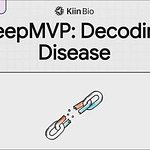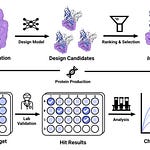Introducing Virtual Cells: A New Framework for Predictive and Explainable Drug Discovery
Valence Labs and Recursion have unveiled a vision for Virtual Cells—AI-driven computational models designed to simulate, explain, and predict cellular responses to perturbations (e.g., drugs, genetic edits). This framework addresses critical bottlenecks in drug discovery by enabling in-silico hypothesis testing before costly lab or clinical work.
Key Innovations:
Predict-Explain-Discover (P-E-D) Capabilities:
Predict: Simulate functional responses (e.g., gene expression, morphology) to perturbations across diverse cellular contexts.
Explain: Identify causal molecular mechanisms (e.g., protein interactions, signalling pathways) behind predictions.
Discover: Generate novel therapeutic hypotheses via lab-in-the-loop experimentation, where AI designs real-world tests to refine models iteratively.
Multimodal Data Integration:
Combines *omics data (transcriptomics, proteomics, phenomics) with AI/ML, atomistic simulations, and structural biology tools (e.g., AlphaFold).
Trained on massive datasets, including 2.2M+ weekly microscopy samples from automated labs.
Scalable, Non-Mechanistic Approach:
Avoids intractable whole-cell simulations by leveraging:
Modern compute infrastructure (GPUs/TPUs, cloud platforms).
Causal AI trained on interventional data (e.g., CRISPR screens, compound treatments).
Reinforcement learning for hypothesis falsification and model refinement.
Applications in Drug Discovery:
Target ID/Validation: Predict disease-driving genes and synthetic lethality.
Compound Screening: Simulate on-/off-target effects across cell types.
Resistance Modeling: Forecast drug resistance mechanisms and design rational combinations.
Translational Biomarkers: Discover context-specific biomarkers for patient stratification.
Performance & Validation:
Biologically Grounded Benchmarks (Table 2) evaluate capabilities across:
Observational (response prediction), Contextual (cell-type specificity), and Explanatory (causal mechanisms) tasks.
Outperforms traditional methods in generalizing across perturbations and cellular states.
Limitations & Future Work:
Current focus: Cellular-level models; extension to tissues/organs (virtual patients) is in progress.
Challenges: Improving causal reasoning and integrating 3D structural data.
Roadmap: Achieve "VC Levels 1–3" for increasingly predictive/explanatory models.
Why It Matters:
Virtual Cells shift drug discovery from "design-make-test" cycles to "design-simulate" paradigms, slashing costs and accelerating therapeutic insights. By unifying prediction, explanation, and discovery, this framework lays the groundwork for AI-driven "scientist agents" capable of autonomous hypothesis generation.









